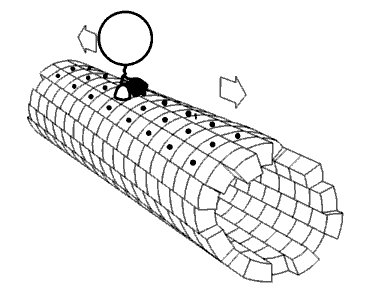
Photo from academic.microsoft.com
Antimicrobial peptides (AMPs) have been extensively investigated as potential antibiotics because the activity of these small cationic peptides can be enhanced by rational design. Many AMPs appear to bind and… Click to show full abstract
Antimicrobial peptides (AMPs) have been extensively investigated as potential antibiotics because the activity of these small cationic peptides can be enhanced by rational design. Many AMPs appear to bind and subsequently disrupt the integrity of microbial membranes. However, the precise mechanisms of membrane disruption remain unclear. Combining experiment and molecular dynamics (MD) simulations, we investigate the mechanisms by which AMPs interact with model bacterial membranes. Specifically, we define the structural and dynamic properties of membrane interaction for a panel of candidate AMPs. Using conventional and temperature virtual replica exchange simulations, we correlate antimicrobial activity with membrane insertion depth. Furthermore, we show that electrostatic density and the propensity for peptide aggregation have competing consequences for efficacy. Overall, our studies provide a detailed understanding of AMP disruption of bacterial membranes, facilitating rational design of more effective AMPs for Gram negative bacteria.
Journal Title: Biophysical Journal
Year Published: 2017
Link to full text (if available)
Share on Social Media: Sign Up to like & get
recommendations!